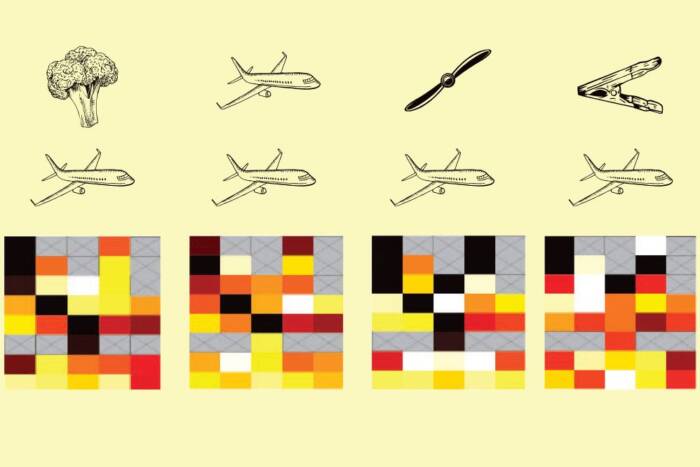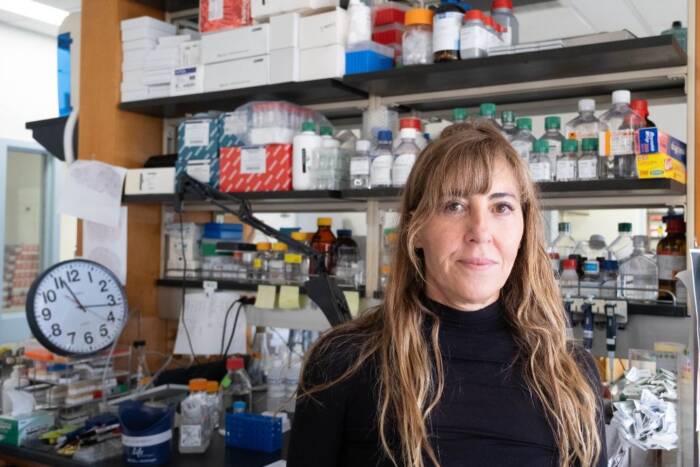How one scientist's fascination with RNA changed medicine forever

There’s a science to brewing good beer. You can’t turn water, malt, hops, and yeast into an effervescent hefeweizen without understanding how to transform grain into drink. The same goes for baking a loaf of bread, which requires a grasp of the dynamics between wheat, water, and yeast. And when it comes to optimizing crop yield, genetic savviness about plant breeding is key.
Such down-to-earth biochemistry runs in Thomas Tuschl’s genes. “My family members are brewers, bakers, and farmers in Bavaria,” says Tuschl, Rockefeller’s F. M. Al Akl, M.D. and Margaret Al Akl Professor and the head of the Laboratory of RNA Molecular Biology.
As a chemistry undergrad at Regensburg University, he gave a nod to that family tradition, paying his bills by pouring pilsners in biergartens. But through his studies he was already sowing the seeds of another burgeoning field: the biochemistry of RNA.
Tuschl has devoted his life’s work to these remarkable molecules, leading to discoveries that have been patented and licensed to pharmaceutical companies—several of which he co-founded—and launched entirely new classes of medicines.
His breakthroughs are driven by a core—and ceaseless—curiosity. “Once the major discoveries move into a company,” he says, “I simply look for another area of research.”
The appeal of RNA
Tuschl’s interest in entrepreneurship came early in his career. In the mid-1990s, as his university education progressed, he traded beer steins for test tubes as he took summer jobs with nearby drug companies. Regensburg’s medieval old town may be a UNESCO World Heritage Site, but the modern city surrounding it is a major technology and manufacturing hub.
A semester abroad in his senior year brought him to Boulder, Colorado—and to his future path. The University of Colorado’s Tom Cech had just won the Nobel Prize(opens in new window) for his discovery of ribozymes, RNA molecules acting as enzymes, implying that life may have once started as RNA.
The buzz on campus thrilled him. “There was so much media attention,” he recalls. “The excitement around what Tom’s lab was accomplishing was infectious. I thought, ‘I really want to work in this field.’”
He spent the next six months in Cech’s lab synthesizing complex compounds useful in the study of RNA chemistry—and becoming increasingly fascinated with the subject. When it came time for Tuschl to return home to Germany for his Ph.D., Cech advised him to join the Max Planck Institute for Experimental Medicine, in Göttingen. There he began tinkering with RNA in earnest in the lab of chemist Fitz Eckstein, who specialized in the chemical synthesis of modified nucleic acids for mechanistic studies and potential therapeutic uses.
During his postdoc at MIT and the Whitehead Institute for Biomedical Research, he began delving into RNA interference (RNAi). First identified in the roundworm C. elegans by Andrew Fire and Craig Mello (who won the Nobel Prize(opens in new window) in 2006 for the discovery), RNAi is a likely ancient and widespread mechanism that many life-forms use to modulate gene regulation, cell growth and differentiation, and block viruses from replication. Double-stranded RNA recognizes corresponding mRNA from a virus and tamps down the production of its encoded protein. C. elegans uses the mechanism to recognize double-stranded genetic material from invasive genetic elements and viruses, disabling their ability to produce harmful proteins. Plants, fungi, and insects follow the same modus operandi.
At the time, however, no one knew whether humans also had RNAi capabilities.
The human element
As the new head of a four-person lab at the Max Planck Institute for Biophysical Chemistry, this was exactly the mystery he set out to solve. Tuschl wondered if he could deliberately trigger the RNAi mechanism in human genes in order to silence disease-causing mutants.
Through biomechanical studies, he first discovered that this long, double-stranded RNA was processed to uniformly sized small, double-stranded fragments consisting of just 21 nucleotides. These short sequences, he found, are what triggered RNAi interference in fruit flies and fireflies. He synthesized the so-called small interfering RNAs (siRNAs) and introduced them into human cultured cells, where they degraded mRNA, resulting in the loss of protein production. Voilà: the genes stalled, unexpressed.
“I showed that you can get RNAi to work in mammalian cells,” he says.
He also developed new methods to characterize and sequence(opens in new window) different types of small RNAs encoded in our genomes, which in turn led to the discovery of microRNA (miRNAs) and piwi-protein interacting RNAs (piRNAs) and their many genes.
While siRNAs help an organism defend against a foreign invader, microRNAs (miRNAs) regulate an organism’s own genes. Both mechanisms have promise to therapeutically shut down problematic gene expression in human beings. siRNAs are best used to silence disease-causing genes, while miRNAs can be inhibited using a type of single-stranded DNA or RNA, leading to upregulation of their targeted mRNAs.
Three patents came from this miRNA research, all named after him. Tuschl I covers 14 methods of inducing RNAi using specific lengths of double-stranded RNA—and led to his co-founding of the pharmaceutical company Alnylam(opens in new window)—while Tuschl II focuses on the compositions, methods, and uses of siRNAs in the development of RNAi therapeutics. Tuschl III covers the more than 120 novel mammalian miRNA gene sequences that he discovered at Max Planck. These were exclusively licensed to Regulus Therapeutics.
It was in this heady time that Tuschl came to Rockefeller, in 2003, to launch the Laboratory of RNA Molecular Biology.
Designing a blueprint
He didn’t know it then, but Tuschl’s experience with RNAi would become the blueprint for a series of bench-to-business successes he’s had in his two decades at Rockefeller.
In 2018, for example, Alnylam released Patisiran, the first drug in the world based on triggering RNAi interference. It’s considered a first-in-class medication by the FDA. It targets hereditary transthyretin-mediated amyloidosis, a rare fatal disease that causes a buildup of the protein transthyretin in different organs, leading to nerve damage and other devastating symptoms. The drug uses siRNAs to block the production of the protein in the liver and thereby its circulation in blood plasma and detrimental deposition in tissues.
But the versatility of siRNA therapy is one reason why it’s captured Tuschl’s imagination for so long. For instance, one company he co-founded, Ventus Therapeutics,(opens in new window) grew from his discovery of multiple small-molecule inhibitors that prevent the production of interferons—immune cells essential to biological defense that can also run amok, resulting in massive inflammation. In the Ventus pipeline are a handful of first-in-class inhibitors for a range of conditions, including lupus, dermatomyositis, Aicardi-Goutières Syndrome, systemic sclerosis, and neurodegenerative diseases such as ALS, TBI, and Parkinson’s. One of these is currently in a Phase 1 clinical trial.
Having cracked the code on how to build a silencer, however, his group also uses those insights to achieve the opposite effect. Yet another company he founded is on the way—and this time, they’re using an approach that is essentially the opposite of RNAi. Rather than suppress the expression of a faulty gene, this company, Anvesana, aims to coax one into operation by manipulating the ratio of mRNA variants to favor the variant that is translated most efficiently. “When you have a genetic disease where one of your two alleles is either not expressed or poorly expressed, we can upregulate the protein production from the healthy one,” he says.
As a start-up, Anvesana is still in the early stages of developing as a life science company. Yet Tuschl is already looking forward to making his next big find.
“If a company is good and well organized,” he says, “it doesn’t leave anything for me to discover. I have to go back to the lab and look for new opportunities.”



